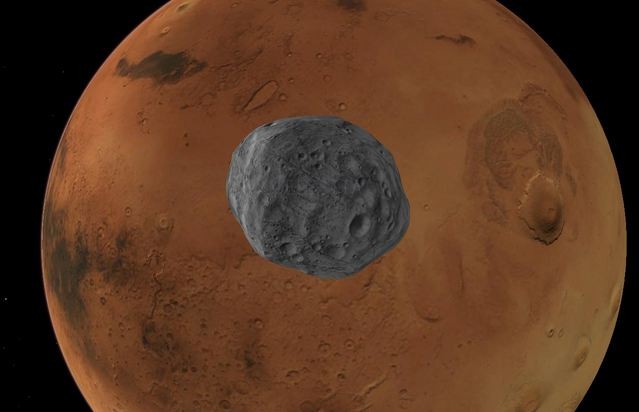It now turns out the path to humanity's first landing on Mars will have to go through Phobos first.
In a bid to save scarce money and resources, NASA announced what it termed an incremental, multiple-mission approach that will see astronauts first land on the Martian moon Phobos by 2033 before landing on Mars itself by 2039.
This new but controversial approach could make the first manned Mars mission technologically and economically feasible, said Firouz Naderi, head of the Solar System Exploration Directorate at NASA's Jet Propulsion Laboratory in Pasadena, California.
This roundabout approach to a Mars landing and other data about the manned Mars mission were broached during the "Humans to Mars Summit" from May 5 to 7.
Naderi said NASA can't count on what he called another "John F. Kennedy moment", referring to the stirring call in 1961 by the late president John F. Kennedy to land Americans on the Moon by the end of the decade of the 1960s, said Space.com.
But the reason for this detour to Mars is basically financial: NASA's share of the federal budget is now less than 0.5 percent, and isn't expected to increase dramatically any time soon.
Here's how NASA envisions its detour mission to work.
First, several space tugs packed with supplies that future crews will use for the Phobos and Mars' landings will be placed in Mars' orbit. Only after the tugs are in Martian orbit will the mission to Phobos take place.
Keeping the cost of manned Mars missions as cheap as possible will make "in-situ resource utilization", or living off the Martian land a necessity, said Oliver de Weck, an aeronautics and astronautics professor at the Massachusetts Institute of Technology.
A study by de Weck and his graduate students suggests using Mars' water, methane and hydrogen might reduce by 48 percent the initial mass sent to low-Earth orbit for a Mars mission.
He also suggested money could be saved by treating Mars exploration as a network of missions with linked objectives, rather than a series of solo missions.
Common elements among various missions will also save on cost, since the same technology can be recycled, noted Brand Griffin, a senior aerospace engineer at NASA's Marshall Space Flight Center.



























